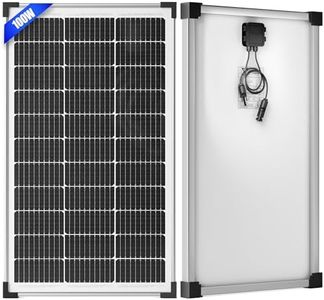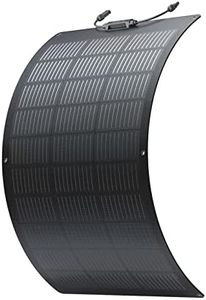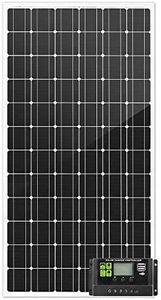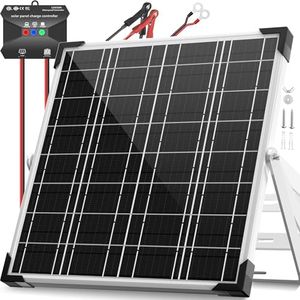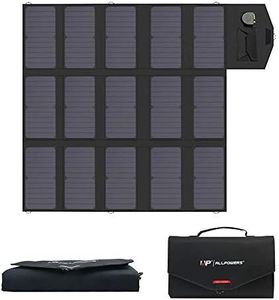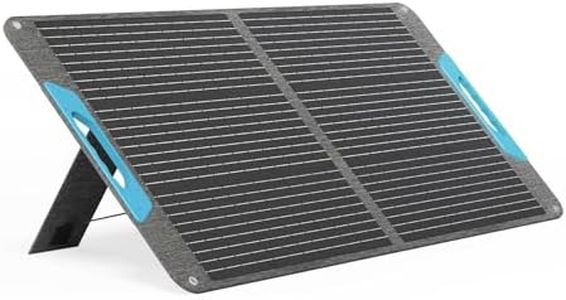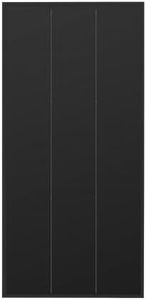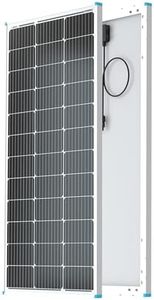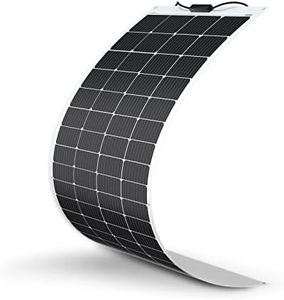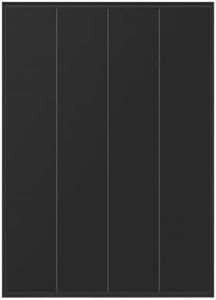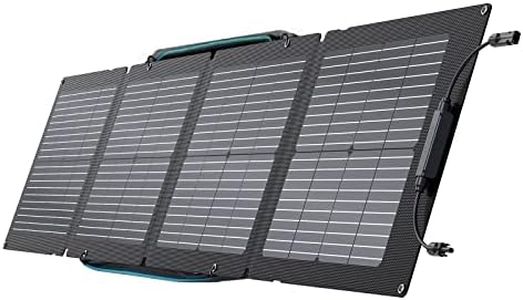We Use CookiesWe use cookies to enhance the security, performance,
functionality and for analytical and promotional activities. By continuing to browse this site you
are agreeing to our privacy policy
10 Best Marine Solar Panels
From leading brands and best sellers available on the web.Buying Guide for the Best Marine Solar Panels
Choosing marine solar panels is a great way to stay powered on the water without relying entirely on your boat's engine or generator. Since marine environments present unique challenges like saltwater exposure and constant movement, it’s important to pick solar panels that are durable, efficient, and tailored to your energy needs. Begin by assessing what devices you want to charge—this can range from small electronics to refrigerators—and estimate your energy usage per day. Understanding where and how you plan to mount the panels on your boat, and how much space you have, will also guide your decision. The goal is to find panels that balance size, output, and durability, ensuring reliable energy without taking up unnecessary space or adding too much weight to your vessel.Panel Type (Monocrystalline vs. Polycrystalline vs. Thin-Film)The type of panel refers to the material and structure used to build the solar cells. Monocrystalline panels are made from single-crystal silicon and tend to be more efficient and space-saving, though they can be a bit pricier. Polycrystalline panels use many silicon fragments and are slightly less efficient but often more affordable and still suitable for most marine uses. Thin-film panels are lightweight and flexible, making them easier to install on curved or uneven surfaces; however, they’re usually less efficient, requiring more surface area for the same power. If you have limited space and need maximum output, monocrystalline is usually best. If you have a larger area to mount or need flexibility for non-flat surfaces, thin-film can be a great solution. Your choice should hinge on your available space, power needs, and the surface where you’ll install the panels.
Power Output (Watts)Power output, measured in watts, tells you how much electricity a panel can generate in ideal sunlight. Marine needs can vary widely: smaller panels (20–50W) are good for charging phones or small lights, while larger systems (100W and above) are necessary for running appliances like refrigerators or navigation equipment. Consider what devices you need to power and their total daily energy draw. Then match that demand with the collective wattage of your solar setup, possibly adding a bit extra for cloudy days or inefficiencies.
Panel Size and WeightSize and weight are crucial because boat space is tight and every additional pound counts. Heavier, bulky panels can be challenging to mount and may affect your boat’s balance or aesthetics. Smaller boats or those with limited space should opt for compact, lightweight panels even if it means accepting lower output, while larger vessels can accommodate bigger setups. Always measure your available mounting area before buying and choose a panel size that won’t obstruct movement or functionality.
Durability and Weather ResistanceSince solar panels are exposed to salt, spray, wind, and sun, marine panels must be designed for harsh conditions. Look for panels with high waterproof ratings, corrosion-resistant frames, and UV-protected surfaces. The better the weatherproofing, the longer your investment will last and the less you’ll have to worry about maintenance. For coastal or offshore use, never compromise on this spec—your panels have to endure the elements day in and day out.
Mounting Options (Rigid vs. Flexible, Fixed vs. Adjustable)Mounting refers to how you attach the panels to your boat. Rigid panels often require solid, flat surfaces and provide stable performance, while flexible panels can be glued or fastened to curved or irregular areas like biminis or decks. Some mounts are adjustable, allowing you to tilt panels toward the sun for better efficiency. Consider your boat’s layout and available space: fixed panels are reliable but not always optimal for sun angle, whereas adjustability can boost performance but may require more frequent manual adjustment.
EfficiencyEfficiency measures how well the panel converts sunlight into electricity. Higher efficiency means you get more power from a smaller area, which is ideal if you have limited mounting space. Most panels list their percentage efficiency—higher numbers (over 18%) are excellent, while lower numbers may be sufficient if you have plenty of space. If your boat can only accommodate a few panels, prioritize high efficiency to maximize your energy.
